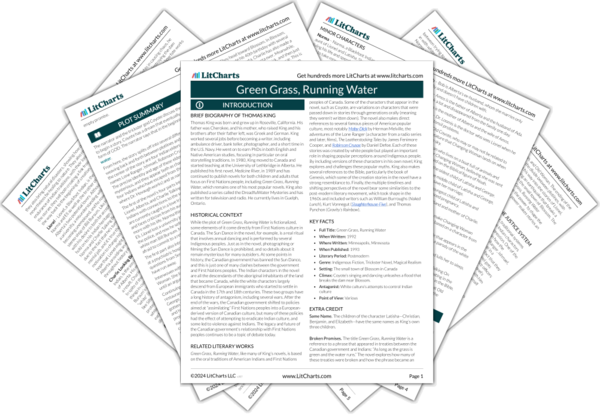Next
Summary
Green Grass, Running Water Study Guide |
Next
Summary
|
Welcome to the LitCharts study guide on Thomas King's Green Grass, Running Water. Created by the original team behind SparkNotes, LitCharts are the world's best literature guides.

Same Name. The children of the character Latisha—Christian, Benjamin, and Elizabeth—have the same names as King’s own three children.
Broken Promises. The title Green Grass, Running Water is a reference to a phrase that appeared in treaties between the Canadian government and Indians: “As long as the grass is green and the water runs.” The novel explores how many of these treaties were broken and how the phrase became an empty promise.